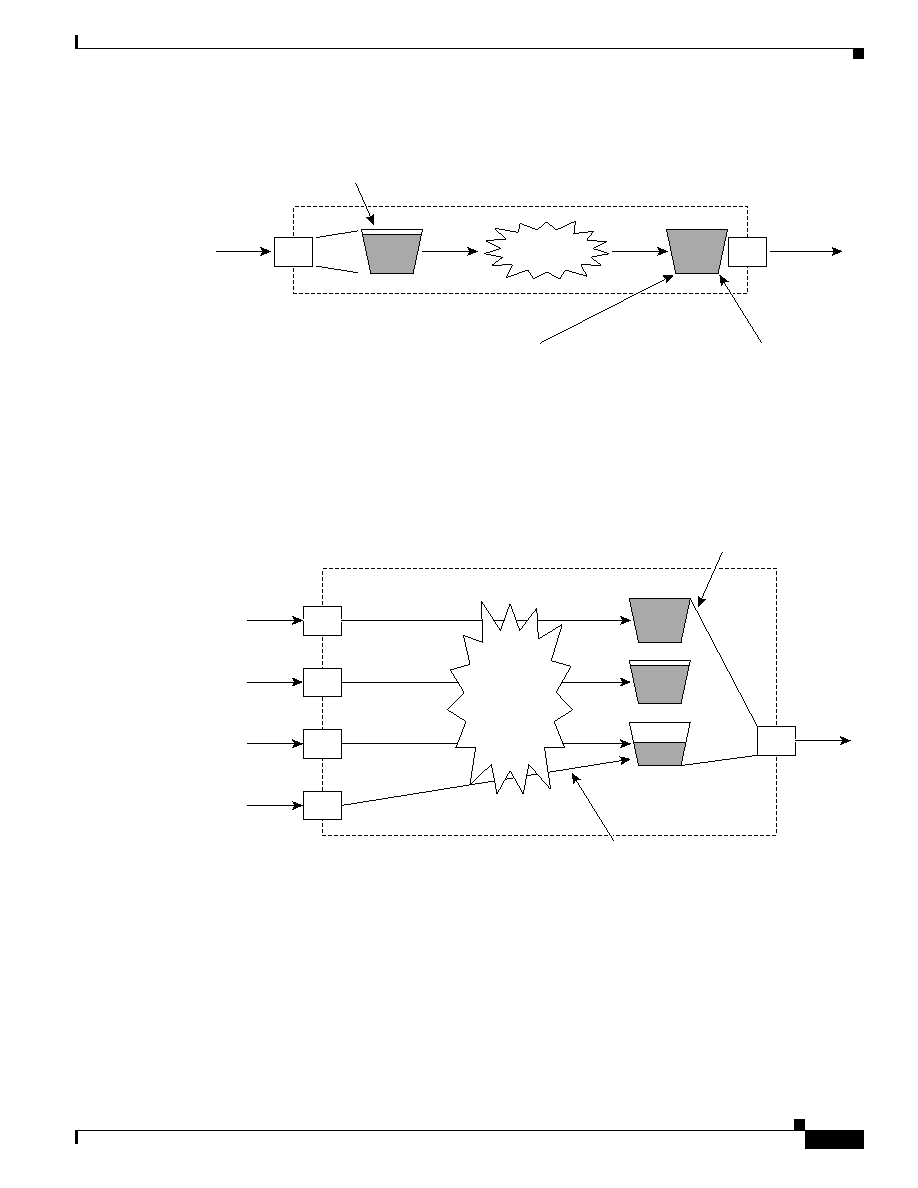
3-3
Cisco AVVID Network Infrastructure Enterprise Quality of Service Design
956467
Chapter 3 QoS in an AVVID-Enabled Campus Network
Overview
Figure 3-2
Transmit Congestion
There are many points in a campus network where QoS mechanisms are required to manage loss, delay,
and delay variation.
illustrates areas where TX buffer congestion can become an issue.
Figure 3-3
QoS in the Campus Network
.
Using multiple queues on the transmit interfaces minimizes the potential for dropped or delayed traffic
caused by TX buffer congestion. By separating voice, video, and mission-critical data (which are all
sensitive to loss, delay, and delay variation) into their own queues, you can prevent flows from being
dropped at the ingress interface even when TX buffer congestion is experienced. You can also minimize
delayed transmission due to non-QoS sensitive traffic congestion by servicing the QoS sensitive queues
in a priority fashion. (Scheduling algorithms are discussed
in the
Ethernet switch
100 Mbps
1Gbps
Additional flows, including
voice, can not get access to TX
queue when it becomes full
and packets are dropped.
Bits serialize OUT at 100Mbps.
TX queue buffers to compensate
for rate change.
Bits serialize IN
at 1Gbps
RX
TX
Ethernet switch
Data
Mission
critical data
Video
Voice
To core
RX
RX
RX
RX
TX
Put voice and video
into "delay and drop"
sensitive queue
Queue assignment based
on CoS/ToS classification
74693
